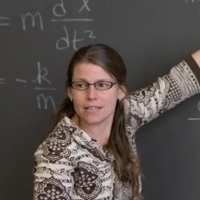Physics and Astronomy/Thayer Plasma Seminar - Robyn Millan, Dartmouth College
Title: "Recent Results and New Experiments for Understanding Energetic Electron Precipitation"
Abstract: Significant progress has been made in identifying plasma waves that drive energetic electron precipitation (EEP) [e.g., Thorne, 2010 for review]. However, there are several missing links in our understanding, including the spatial scale of EEP and the physical “modes” of wave-particle interactions. For example, electrons may be scattered slowly through a diffusive process [e.g., Shprits et al., 2008 review], or rapidly through nonlinear processes [e.g., Albert, 2000; Bortnik et al., 2008, Omura et al., 2015]. The physical mode determines the scattering rate, and together with the spatial scale, the impact on the radiation belts. This presentation will review recent results from BARREL (Balloon Array for Relativistic Electron Losses), followed by a discussion of two upcoming experiments to address these gaps in our understanding. The REAL (Relativistic Electron Atmospheric Loss) CubeSat will characterize different modes of atmospheric loss by making high time resolution measurements of the electron pitch angle and energy distributions, in low Earth orbit (LEO), over a wide energy range, from keV to MeV. LEO is ideal for measuring precipitation since the atmospheric loss cone is larger (~60 deg) than at the equator (few degrees). The pitch angle-resolved measurements will also distinguish between precipitating, quasi-trapped, and trapped populations, thus more accurately quantifying the electron loss rate. BOOMS (Balloon Observations of Microburst Scales) is a balloon-borne imaging experiment that will characterize the spatial scale and distribution of microburst precipitation, connecting this important loss process to plasma wave coherence scales at the equator. Balloons are ideal for imaging since the nearly-stationary platform allows for separation of temporal and spatial variations.
